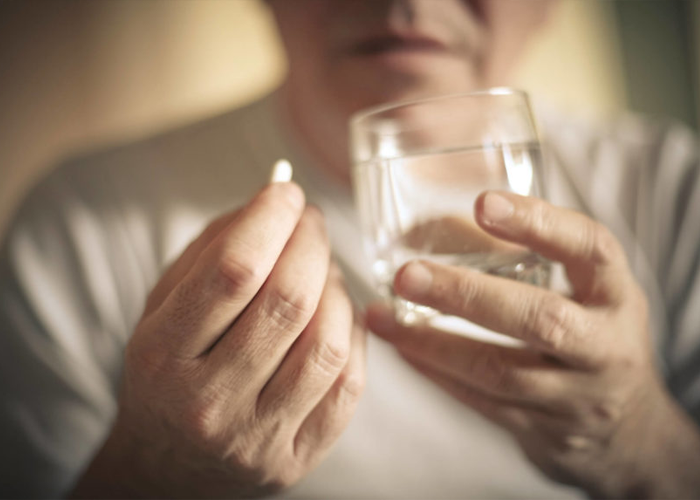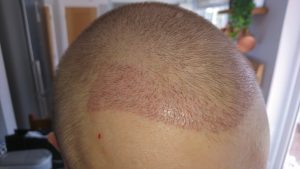Amlodipine is a medication used to treat high blood pressure and angina, it is not a common side effect of this medication to cause hair loss. However, as with any medication, some people may experience hair loss as a side effect while taking amlodipine.
The incidence of hair loss due to amlodipine is considered rare, but if you experience any hair loss while taking this medication, it is important to inform your healthcare provider.
They can evaluate your symptoms and determine whether the medication is the cause of your hair loss and if an alternative medication is needed.
It is important to note that there are many potential causes of hair loss, including genetic predisposition, hormonal imbalances, and stress, so hair loss may be caused by something other than the medication.
Amlodipine, also known as Norvasc, can cause your hair to thin. However it’s not guaranteed that every user will experience hair loss. If you are predisposed to hair loss then Amlodipine is not going to help your situation.
- Does high blood pressure mean you will be bald within a few years?
- Is there a way to reduce the effects?
I jump into the most common questions in this article.
Which blood pressure medications cause hair loss?
Can high blood pressure medication cause hair loss? Some blood pressure meds can have a devastating effect on your hair, the problem is blood pressure meds are normally long term even for the rest of your life in some cases.
It seems as if the main culprits for causing hair loss are ACE inhibitors which include the ubiquitous Amlodipine blood pressure medication.
According to the reputable mayo clinic, the following blood pressure medications can cause hair loss, sometimes significant hair loss:-
- (Sectral) atenolol
- (Tenormin) bisoprolol
- (Zebeta) metoprolol
- (Lopressor) toprol
- (Corgard) nebivolol
- (Bystolic) and propranolol
- Blood pressure meds known as ACE inhibitors also cause baldness
The hair follicle is thought to be dormant while taking these drugs and if you were to stop taking your blood pressure medication your hair would regrow, if you survived that long!
It can be distressing to find your hair falling out after living with a healthy head of hair but, it’s important to note you should not stop taking your blood pressure meds in the interest of regaining your flowing locks.
No one has ever died of natural causes caused by hair loss but if you stop taking your blood pressure meds you could be putting your life at risk.
If your hair loss is a major concern you can investigate getting your blood pressure medication changed by your doctor.
Will my hair grow back after stopping amlodipine?
It is thought that your hair follicles are dormant while taking ACE inhibitors such as Amlodipine and it is suggested that once you stop taking ACE inhibitors like Amlodipine then your hair will start to regrow.
The problem is with hypertension, if you have high blood pressure there are very few alternatives than to take drugs to lower your blood pressure.
Of course, if your high blood pressure is brought on by lifestyle issues then there is a chance you can turn back the clock and reset your blood pressure with weight loss and exercise.
Some of you may have hereditary high blood pressure which is not so easy to deal with and can mean a lifetime of drugs to keep your blood pressure in check.
If your doctor can find a better control for your blood pressure then you may need a little help to kick start your hair regrowth.
A well balanced healthy diet with some vitamin supplements may do the trick of the use of Rogaine may give your hair follicles the jolt needed to sprout hair again.
The encouraging factor is that your hair follicles are not dead, just dormant. It is possible to regain a full head of hair if you can find a way of Amlodipine and other ACE inhibitors.
What are the side effects of amlodipine?
You could consider amlodipine as a miracle drug if you suffer from high blood pressure. However, the side effects can be zero to mild to life-threatening.
There is an exhaustive list of side effects from amlodipine which include becoming unusually tired to swollen legs and ankles.
From personal experience, the side effects are manageable compared to the complications of high blood pressure.
Below are just a few of the potential side effects, and there are many many more!
- Abnormal dreams
- anxiety
- back pain
- bad unusual or unpleasant (after) taste
- bleeding gums
- blistering, crusting, irritation, itching, or reddening of the skin
- bloating
- bloody nose
- burning feeling in the chest or stomach
- burning while urinating
- burning, dry, or itching eyes
- change in color of the treated skin
- change in sense of smell
- change in taste
- changes in vision
- constipation
- continuing ringing or buzzing or other unexplained noise in the ears
- cracked, dry, or scaly skin
- decreased sexual performance or desire
Having listed just a few of the side effects (it seems scary) you need to know that literally millions if not billions of people use Norvasc amlodipine daily to control their blood pressure, if it’s not amlodipine it’s another ACE inhibitor that does the same thing.
If you are struggling to control your blood pressure, who cares about hair loss, yes it’s not a nice experience but focus on what is important to you like living a normal life.
What are the worst side effects of amlodipine?
You know having high blood pressure tends to be swept aside as if it’s a nothing ailment but the truth is high blood pressure can devastate your life, and your families life.
Amlopdipine is suggested to be one of the very worst high blood pressure medications you can take, however, it is taken by millions of folks daily.
Swelling
Having said that living with swollen legs and ankles can be very uncomfortable, the swelling can spread to the wrists and fingers also.
How long for swelling to go down after stopping amlodipine? It is difficult to give a specific time frame for how long it will take for swelling to go down after stopping amlodipine (a medication used to treat high blood pressure and angina) as it can vary from person to person.
Factors such as the severity of the swelling, the individual’s overall health, and whether any other underlying conditions are present can all affect how long it takes for the swelling to subside.
If you have stopped taking amlodipine and are experiencing swelling, it is important to speak with your healthcare provider. They may be able to recommend treatment options to help reduce the swelling and monitor any other potential side effects.
In general, it takes a few days to a few weeks for the side effects to subside.
Headaches
Amlodipine can cause massive headaches that are debilitating and on a scale of surpassing migraine attacks.
If you never had nervous anxiety you can expect to join the club if prescribed amlodipine to control your high blood pressure. It is a common side effect that changes the way you operate as simple tasks and meetings can become an ordeal.
Extreme fatigue is very common. I get out of bed and fall back to sleep and find it hard to spend more than half of the day out of the home before becoming very tired.
Nausea and loss of appetite can be a regular occurrence in those prescribed with amlodipine.
Final thoughts
If you do not have hereditary high blood pressure you can make changes to lower your blood pressure.
Quitting smoking and stopping drinking alcohol will set you well on your way to recovery.
References: https://www.mayoclinic.org/drugs-supplements/amlodipine-oral-route/side-effects/DRG-20061784?p=1



















